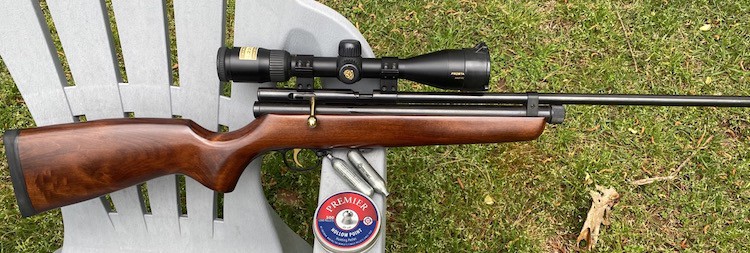Have you ever wondered how many types of air rifles are out there?
Is your head spinning around with various powerplants and you don’t know which one to choose?

We got you covered.
In this post, you will get detailed information about all types of air guns
And each type’s advantages and disadvantages so you can save time and money in the quest of searching for the best air gun on the market.
There are 5 types of air guns in the whole world.
They are spring-powered, gas pistons, precharged pneumatic (PCP), variable pumps, and CO2 air guns.
Each type has its own unique characteristics but all of them got their names due to the way they operate.
Table of Contents
Spring powered

In the spring-powered air rifle (springer), there is a piston and a coiled spring inside the chamber.
The spring is compressed when you cock the gun .
When you pull the trigger, you make the spring decompress so it causes the piston to move forward.
The piston movement makes the air compressed and the pellet is propelled out of the muzzle due to the force from pressurized air.
All of this happens in the blink of an eye.
| Pros | Cons |
|---|---|
|
|
(For more on the best break barrel air rifles on the market, see this post)
Gas piston

Basically, a gas piston air gun (also called gas strut, gas ram) works the same way as the spring piston gun.
But a gas ram gun has a gas-filled cylinder instead of a coiled spring.
The air in the cylinder is already compressed and you apply more pressure to it when you cock the gun.
The pressurized air is kept under tension until you release the trigger.
When that happens, the pellet is discharged out of the barrel due to the propellant force of pressurized air.
| Pros | Cons |
|---|---|
|
|
Precharged Pneumatic (PCP)

The precharged-pneumatic (PCP) air gun uses high-pressurized air in the chamber as the propellant force to discharge the pellet.
The pressurized air is compressed up to 3000-4000 psi by using scuba tanks or hand pumps or special PCP compressors.
When the air reaches the desired pressure level, the gun is ready to use.
| Pros | Cons |
|---|---|
|
|
(For more on the best .50 air rifles, see this post)
Variable pumps

The variable pump gun has a piston and a pressure cylinder in the chamber.
When you cock the gun, the air between the piston and cylinder is compressed.
It has nowhere to go and is forced into the cylinder.
The cylinder has a lock valve that lets the air in and keeps it there until you shoot.
When you pull the trigger, the pellet is propelled due to the force of compressed air.
| Pros | Cons |
|---|---|
|
|
If you’re looking to enhance and protect your air gun, consider exploring a professional gun refinishing service like the one offered by Texas Gun Club. Check out their gunsmith services to give your air gun a fresh and improved appearance.
CO2

A CO2-powered air gun works the same way as a PCP air gun but it uses carbon dioxide cartridges (CO2) as the power source instead of pressurized gas.
When you pull the trigger, the compressed CO2 is released and it causes the pellet to move forward inside the barrel.
| Pros | Cons |
|---|---|
|
|












































